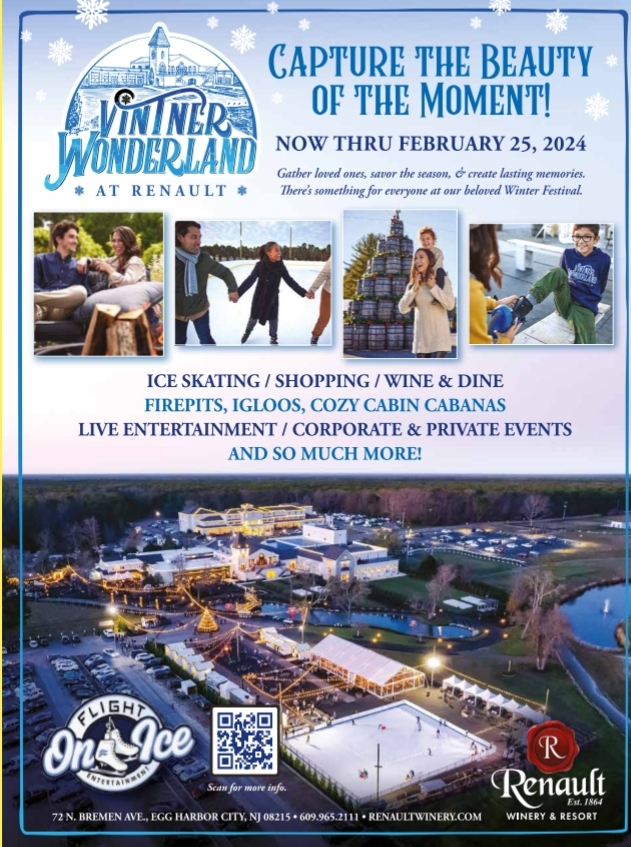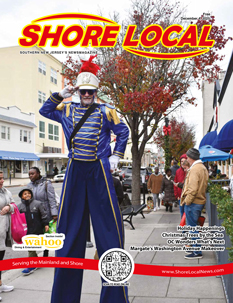By William Sokolic
Judy Young Link was born with roller skates on her feet.
Okay, that maybe something of an exaggeration, but she has a photo of herself as a toddler standing on the polished floor of the The Ventnor Athletic Center ready to roll around the rink her family built from the ground up in 1935 on Dorset Avenue in Ventnor Heights. More than 88 years later, Judy Link is still in the skating business in South Jersey long after the Ventnor rink turned into a CVS. She runs Young’s Skating Center, also built by her immediate family in Mays Landing.
From 1935 until it closed in 1988, the Ventnor Athletic Center offered people something to do in the Downbeach section of the Jersey Shore south of Atlantic City, especially during the slow quiet winter months. You might say the rink changed the dynamics in town during the winter. “We gave them something to do. And launched a venture that the family still enjoys today, though the action takes place in Mays Landing,” Judy said.
“And so it went, one generation after another in the service of roller skating,” said Ralph Marinelli, who serves as Mr. Fixit, historian and any other job you can think of at the skating rink.
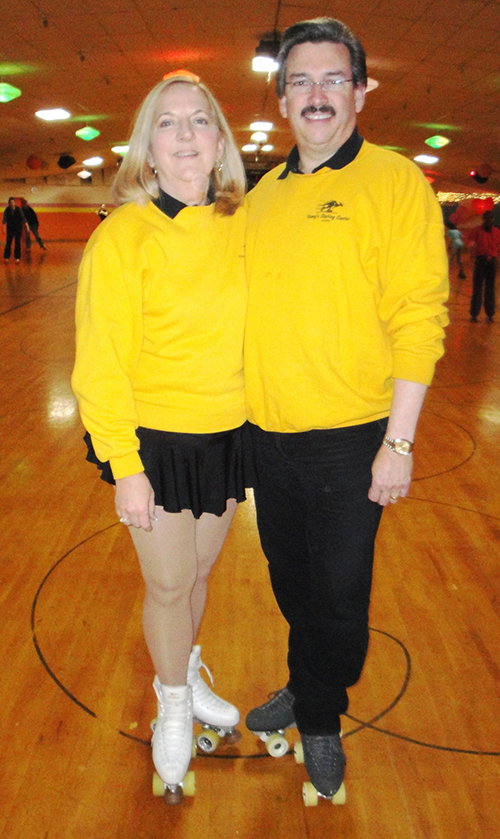
Judy and Jim Link
“Our motto, found on our letterhead, is, “Generations of Roller Skating Tradition,” Judy said.
The 88 years weren’t always smooth cruising, what with grandmom breaking the family’s promise about the fate of Ventnor.
Edmund and Winifred Young managed the Ventnor skating rink from 1935 to 1973. “For 38 years they not only managed the rink, but they were instrumental in bringing out the love of skating to their skaters,” Judy said. “My older sisters, Hazel and Edwina, and I all competed on a state, regional and national level in artistic skating, which consisted of dance, figures, and freestyle. We also competed in speed skating. They hosted numerous competitions in each category. Both Ed and Winnie were nationally ranked teachers. They obtained their Gold Bar in Dance Skating.”
The Young’s were never far away from the rink. They lived above the Ventnor one so each night the three girls could hear the cacophony from the skaters and the music accompaniment filtering upstairs. “You could definitely hear it,” Judy said. “We had the advantage of running downstairs and getting ice cream, though.”
Susan Van Duyne, now the director of the Ventnor City Cultural Arts Center, worked at the skating rink back in the day.
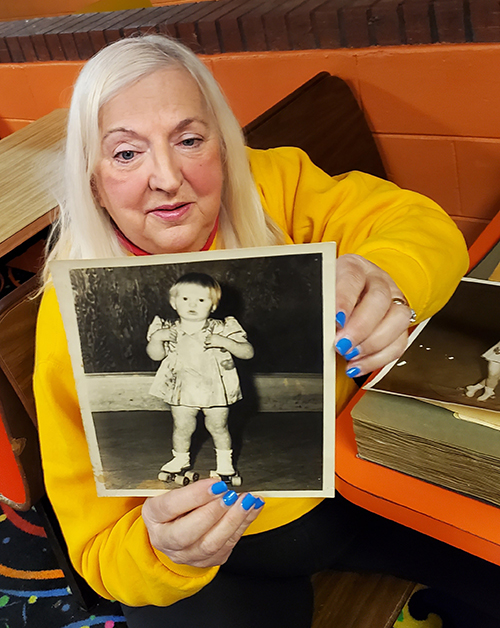
Judy Young Link holds a photo of herself rollerskating as young toddler.
“It was a pivotal meeting place for kids who were lacking for things to do,” she said.
William and Hazel Wagner, longtime Ventnor residents, and grandparents of the dynasty, opened the rink in 1935. Indeed, the men in the family participated in the construction. “My father, Edmund Young, and my uncles, William Wagner 2nd, John Wagner, and Harvey Wagner, and my grandfather, were all involved in the construction of the rink.”
The rink attracted family skaters, roller hockey players, speed skaters and birthday parties, all of it adding to the success.
The family seeks new attractions each year to keep the skaters coming back. The rink has also been tying into national promotions touting roller skating as exercise.
Come the ’70s, things got a little dicey for Ventnor. “William Wagner promised my parents that he would sell the Ventnor Athletic Center to them,” Judy said. “My grandmother said she would not sell the rink to any of her children, thereby breaking the promise my grandfather had made to my parents.”
“Aunt Marian Patroni got a straw buyer to make an offer to my grandmother to buy the rink for her in 1973, As you can imagine it was devastating to our family,” said Judy, who retired as a biology teacher in 1980.
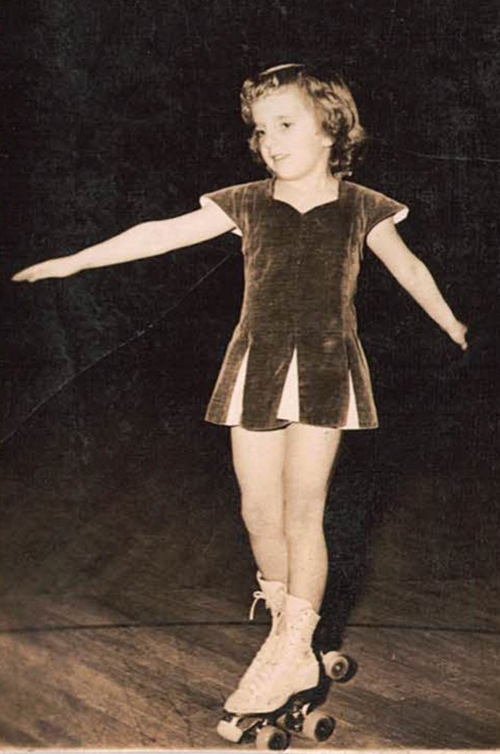
Judy Young Link grew up roller skating.
Marian Patroni owned and operated the Ventnor Athletic Center from 1973 to the mid-1980s then sold it to CVS, which occupies much of the real estate. The rink closed in 1988.
Meantime, way back in 1962, Edmund and Winifred purchased Lenape Park in Mays Landing. The park had an operating roller rink which went along with boat ramps and amusement rides. The park suffered a fire which destroyed the existing rink. The Young’s built a new one in another area of the park. Young’s Skating Center opened in 1974. “This year, 2024, marks the 50th Anniversary of the rink,” Judy said.
That isn’t all. Edmund, Wynnie and Judy built a skating center in Blue Bell, Pa., which they called Young’s Regency. “My husband, Jim Link, and I met there,” Judy said. “We sold that skating rink. Jim and I leased one in Villanova from 1990 to 1995 when my parents wanted to retire. We entered into lease-purchase agreement and subsequently purchased Young’s Skating Center from my parents and have been here since.”
The rink still hosts the South Jersey Figure Skating Club, South Jersey Speed, and the South Jersey Hockey Club.
One thing is indispensable to skating: music. At one point, skating music drew from an exhaustive catalog of 45 rpm records. “My father developed
long playing tapes to skate to. Later we had record service that supplied us with all the popular records of the day,” Judy said. “Today, we rely on an internet steaming at Young’s.”
Skaters can burn 600 calories an hour, said Roller Skating Association Executive Director, Jim McMahon. “It’s a unique energy tied to the music. Body moves rise and fall with the beat they got to keep.”
Jim and Judy are not alone in their love of roller skating. “We’ve been members of the Roller Skating Association (RSA) for 44 years. Our membership in the RSA has provided endless guidance and interaction with fellow roller skating rink owners/operators around the country with whom were share our experiences.”
Today, around 1,100 rinks still do business according to the RSA. The numbers have remained steady over five years but are skewed by COVID-19. “The country lost around 70 rinks during the pandemic,” McMahon said.
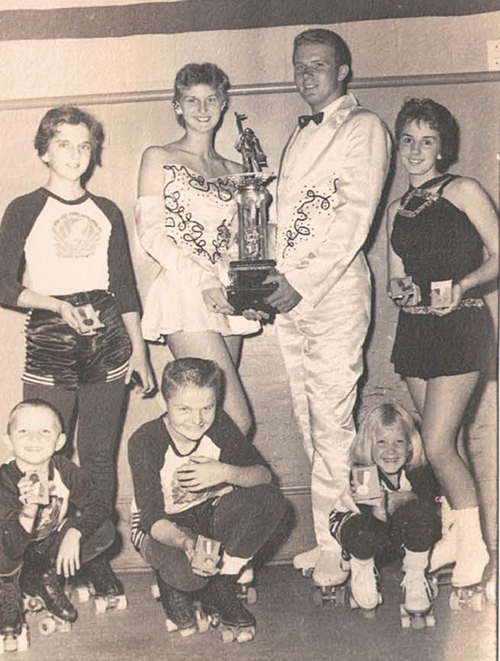
Skate Crew: top row left to right, Judy, Hazel, Ed Haas (Hazel’s skating partner), and Edwina. Bottom row left to right, Billy Wagner III, John Glassey, Connie Gilbert. Circa 1960.
Some banks declined to work with rink owners. “All they needed to do was freeze payments until the rinks were healthy and doing well,” he said.
Today, roller rinks are in a good space now, thanks in part to social media
The popularity isn’t universally shared. “Skating is on the decline for a number of reasons,” said Max McKillip, archivist at the National Museum of Roller Skating in Lincoln, Nebraska. “Activities for children have diversified. There are occasionally new rinks built but startup costs are a hindrance.”
McMahon is still optimistic.
“The energy and excitement is better than ever. It’s why it won’t ever go away,” he said.
William Sokolic is a veteran journalist who has written for daily, weekly and monthly publications. He’s covered a wide range of news, features and entertainment stories. Much of his work concerns tourism, Atlantic City, and the gaming industry.



